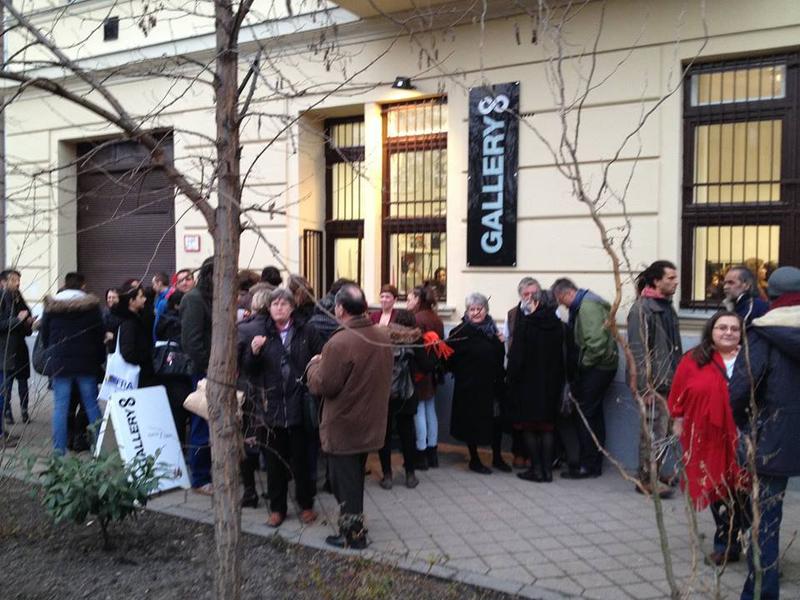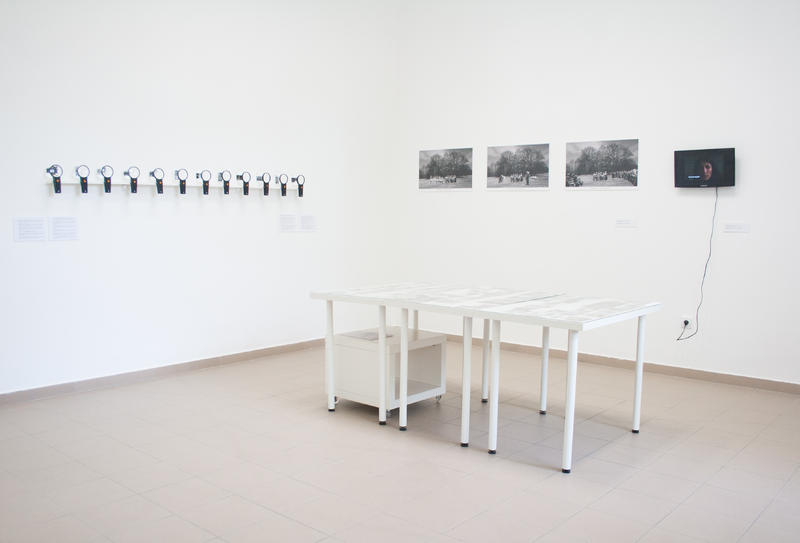Roma Body Politics is an extensive and intercultural (Roma – non-Roma) exhibition series and educational program aimed at exploring, documenting and making visible the Roma body politics in present-day Europe. The project, which was realized with the help of Roma artists and intellectuals, focuses on the depiction, representation and participation of Roma – and especially Roma women – in the media, art and public life. The exhibition No Innocent Picture is the first event of the program series.
The mission of Gallery8 is the liberation of the Roma body – and therefore the liberation of Roma people. Roma bodies are not described here as a way to objectify, re-shape or dis-figure Roma. Instead, the Roma body is the vehicle in this initiative for finding specific practices to “re/configurate diasporic gazes into subjects and to invite ourselves to be viewers; to uncover the colonial discourse inscribed in us and to depict it in exhibitions so that it is quasi disenchanted, to unmask the Western master-discourse as a historical legend” (Peggy Piesche, cultural theorist).
Exhibitions
I. NO INNOCENT PICTURE
Mar 12, 2015 - Apr 03, 2015
Opening Speech: Camilo Antonio, activist in the poetics and cultural politics of the diaspora, founder of the Urbannomadmixes group
The exhibition presents how the social assignment of Roma Bodies to an underclass is a historical construct that has multiple origins, rooted in the institutions of both slavery and mass media. It theorizes how race is enacted in the moment of the gaze, and how this spectatorial surveillance complicates social relations because of how it is historically and inextricably woven into the European collective consciousness and the European cultural ethos via popular media.
Roma scholars, diplomats, public figures and intellectuals posed as models for Déri Miklós's psychoanalytical photographic portraits. Moreover, each of them undertook to embody a well-known Roma stereotype, assisted by Kriszta Szakos stylist and Zita Kozári makeup artist. Thus, they took on the roles of the “Gypsy girl”, "the “ghetto dweller”, the “gangster”, the “Gypsy musician”, the “Gypsy Madonna”, the “King of the Gypsies”, the "fortune-teller", the “voivode”, etc.
Curators: Angéla Kóczé, Tímea Junghaus, Árpád Bak
The participants: Rodrigó Balogh, Katalin Bársony, Mária Bogdán, Ágnes Daróczi, Clara Farkas, Dr. Rita Izsák, Tímea Junghaus, Zeljko Jovanovic, Bettina Kállai, Iulius Rostas, Marius Taba.
Photo by: Miklós Déri
Stylist: Kriszta Szakos
Makeup: Zita Kozári


II. ARCHIVE OF DESIRES
Apr 08, 2015 - May 09, 2015
Artists: Imre Bukta, Lada Gaziova, Tamara Moyzes, Csaba Nemes, Selma Selman
Researching the photo archives of the Roma collections in Hungarian public collections we find an outrageous number of Roma pictures either fulfill the quite ill –natured desires of the collectors or are simply improper and offensive. We process these problematic photos with the participation of Roma and non-Roma contemporary artists.
After this deconstruction of the „great historical archive” we will comprehend the artworks with the research into the family archives of the new generation of Hungarian Roma activism in the frame of a unique community project focusing on the specificities of subjective archives. We will present the works of the contemporary artists, together with the family collections. The disrupted and transgressed majority images together with the images of personal history will form our Roma „Archive of Desires.”


III. SAY NO TO IDENTITY THEFT - Delaine LeBas
May 13, 2015 - Jun 19, 2015
Identity
Is the crisis can't you see
Identity, Identity
When you look in the mirror
Do you see yourself
Do you see yourself
On the TV screen
Do you see yourself in the magazine
When you see yourself
Does it make you scream
When you look in the mirror
Do you smash it quick
Do you take the glass
And slash you wrists
Did you do it for fame
Did you do it in a fit
Did you do it before you read about it
Identity by X-Ray Spex
1978
“The lyrics from Identity have been an ongoing theme tune for my life since I first heard them in 1978, as a 13 year old, being sung by Polystyrene a truly individual artist who influenced me in the idea of how you could purely be yourself in what you looked like and sounded like, there was no need to conform. I could be who and what I was while at the same time looking and being how I wanted. This has consistently fired my artistic ventures ever since and continues to do so.
We are stolen artefacts, physically, mentally, artistically. Even now in 2015 we are still seen and contextualised by everyone else but ourselves. How we are perceived by 'others' is still valued more important than how we see ourselves in the world view. We have been and continue to be stereotyped out of our own existence; our mere presence as human beings is a contested site. A colonialist way of seeing dominates the language that surrounds us and many others still, and continues to try and suppress us. Artistically across practice I continue to question this.
My body as artefact, the object, the artistic site. A living sculpture. The work take place within the gallery setting and on the street.
The multiplicity of my identity and my questioning of this is an ongoing everyday artistic unravelling of what it means to always to be seen by outside positions. Orientalism and it's legacy still infiltrates ways of seeing and in order to be seen a different space needs to be created that refuses to speak in the language that has continued and allowed our bodies to be objectified, highly sexualised and stereotyped.I say no to Identity theft. I say no to who you think I am. I say no to what you think I should look like.
The gaze that is put upon us is disrupted. The 'passing' of being white is played upon and the true historical legacy that continues to dominate our identity is exposed for the antiquated and exclusion based structure that it is. To question these structures that are based in 'old fashioned' ways of thinking and seeing is to question ideas of culture itself and who owns this in terms of visual representation, historical and academic documentation."
(Introduction by Delaine LeBas for the Say No to Identity Theft – Exhibition at Gallery8, March, 2015.)